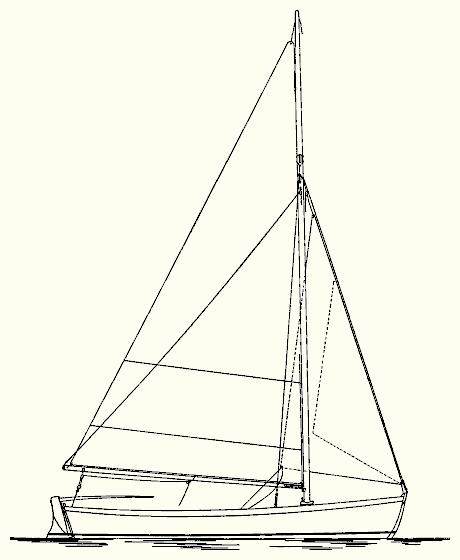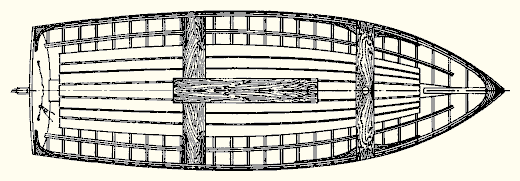

Here are the designs of a sturdy, lively and capable little sailing dinghy. She is named as a mark of respect and admiration after a sturdy, lively and capable little salt water bird, the sanderling. This little bird of gray and white plumage breeds in the Arctic regions and migrates south along the coasts of all the northern continents -- a dainty little sister or, as the case might be, brother of the wavelet-chasing sandpiper, so dear to all of us that cherish the charm of the sandy beaches and the endless song of the sea as it caresses the verge of the land. Sanderling; yes, this indeed is a pleasant sounding name and a most appropriate one for the naming of a little boat.

This latest of the family, for all her modest dimensions, is not a small boat. She has the ability and power to carry in comfort and safety two or three average size grown-ups. She will be smart and able and, as little boats go, dry. One, after all, cannot expect to go sailing in a small boat and expect to return home unwetted and spotless. And I am rather of the mind that the wetting and mussed-upness adds not a little to the fun of sailing small craft. I wrote once that "there is a wealth of charm in a very little boat; there is response; intimacy; and a worth-whileness which never comes with pretentious dimensions. Perhaps the best situation would be to own two boats; the one, big and comfortable to live aboard; the other, small and lively to play with." However, the above might work out, our little Sanderling fills the requirements for the little boat. As shown in the plans she is 14 feet in overall length; 13 feet on the water line; 4 feet 8 inches in breadth; and 6 inches in draft, the latter with her centerboard up; with it lowered to its full depth, approximately 3 feet 2 inches. The freeboard at the bow is 1 foot 9 inches and at the stern 1 foot 3 1/2 inches. The sail area is 114 square feet divided into mainsail, 87.5 square feet and staysail, 27 square feet.

The deck plan shows a seat extending along the top of the center board trunk; this also serves as a cap to the trunk. There is an athwartship seat stretching across the hull at station 8. This has three purposes; to sit on, to tie the sides together, and to prevent the centerboard trunk from wringing. The trunk cap, mast bench and the thwart complete the in-the-hull furniture; rather than three thwarts to step over the hull is nearly open and it is most reasonable and comfortable to sit on kapok filled cushion-type life preservers laid on the floor boards while sailing.

It is obvious from her plans that Sanderling is a round bilge boat, and it is only for the uninitiated that the design of the hull form is mentioned. Despite popular opinion it is no more difficult to build a round bilge hull than to build one of V-bottom model, and I know most professional builders prefer the former type. To be sure a steam box is needed for bending the ribs of the neatly rounded bilges of a hull like that of Sanderling, but a small steam box can be made of a length of 4-inch diameter stove pipe, using a blow lamp to supply the heat. Nothing to it. And besides one is very likely to also require hot steam in the process of bending the forward ends of the side and bottom planking; and this applies to V-bottom as well as round-bottom boat building.